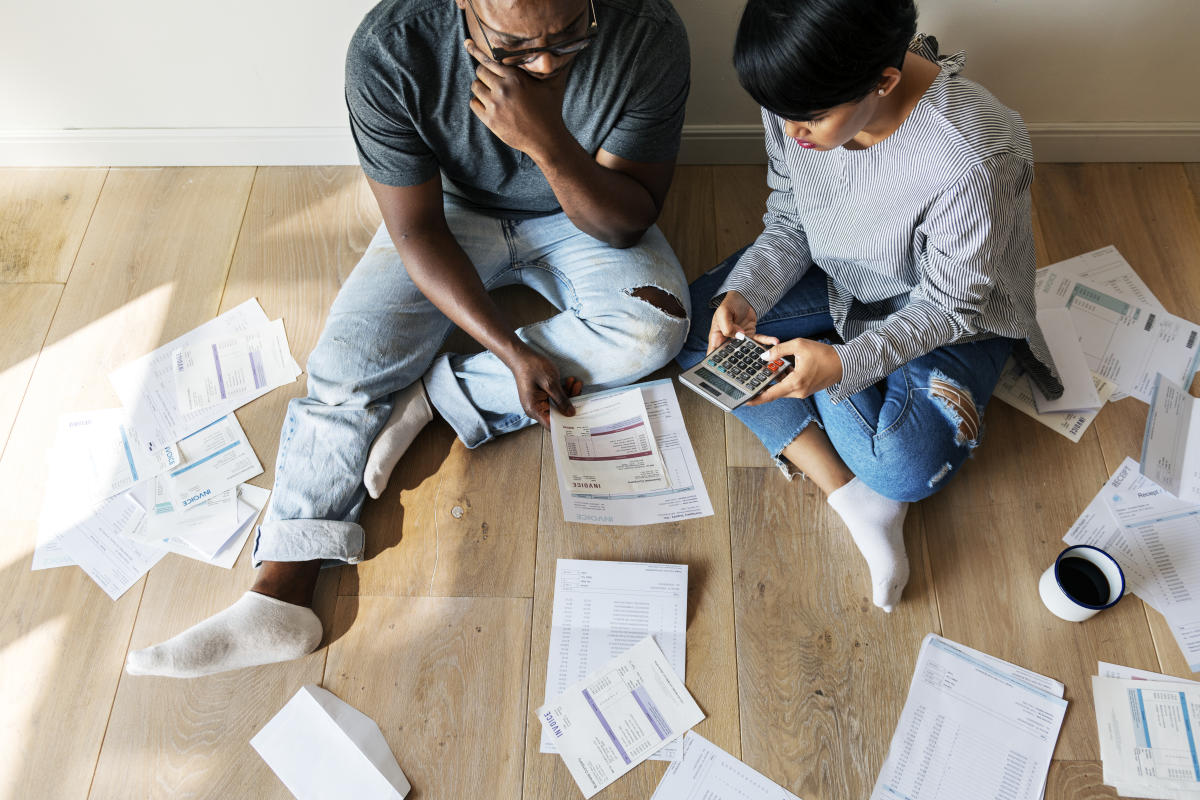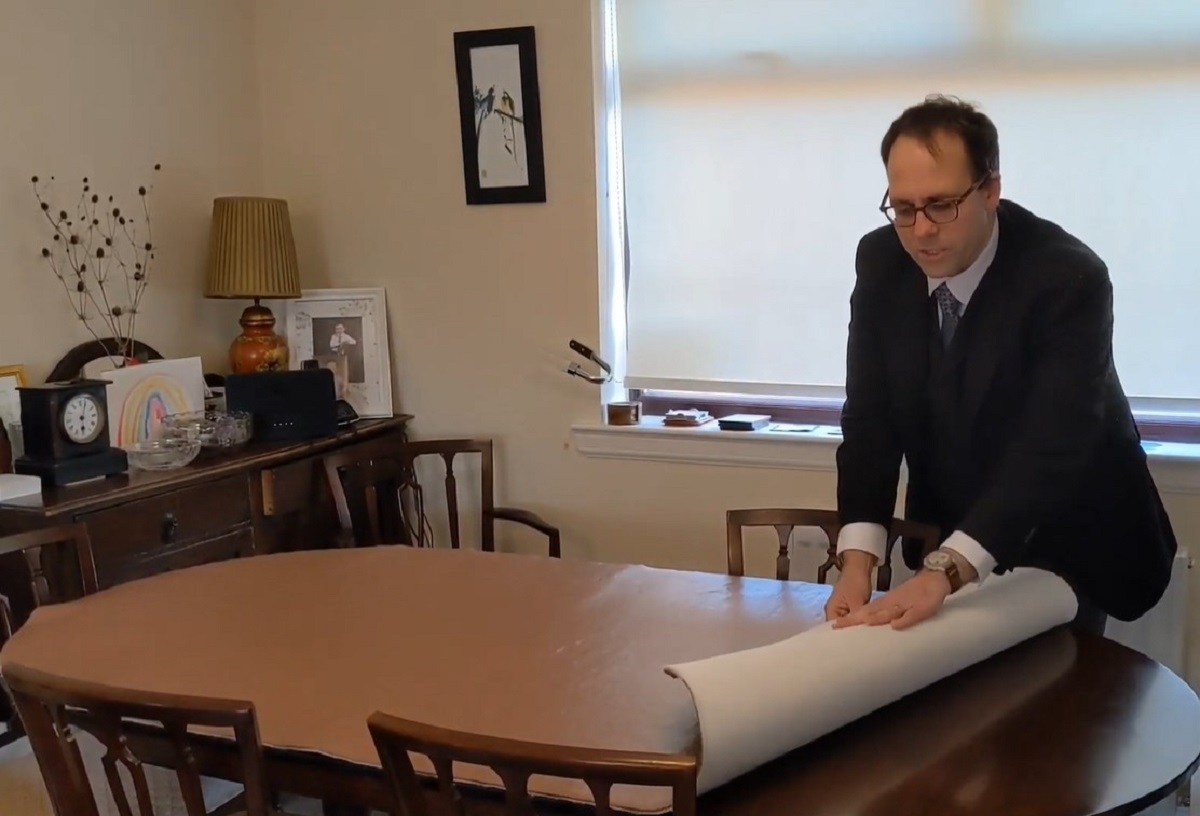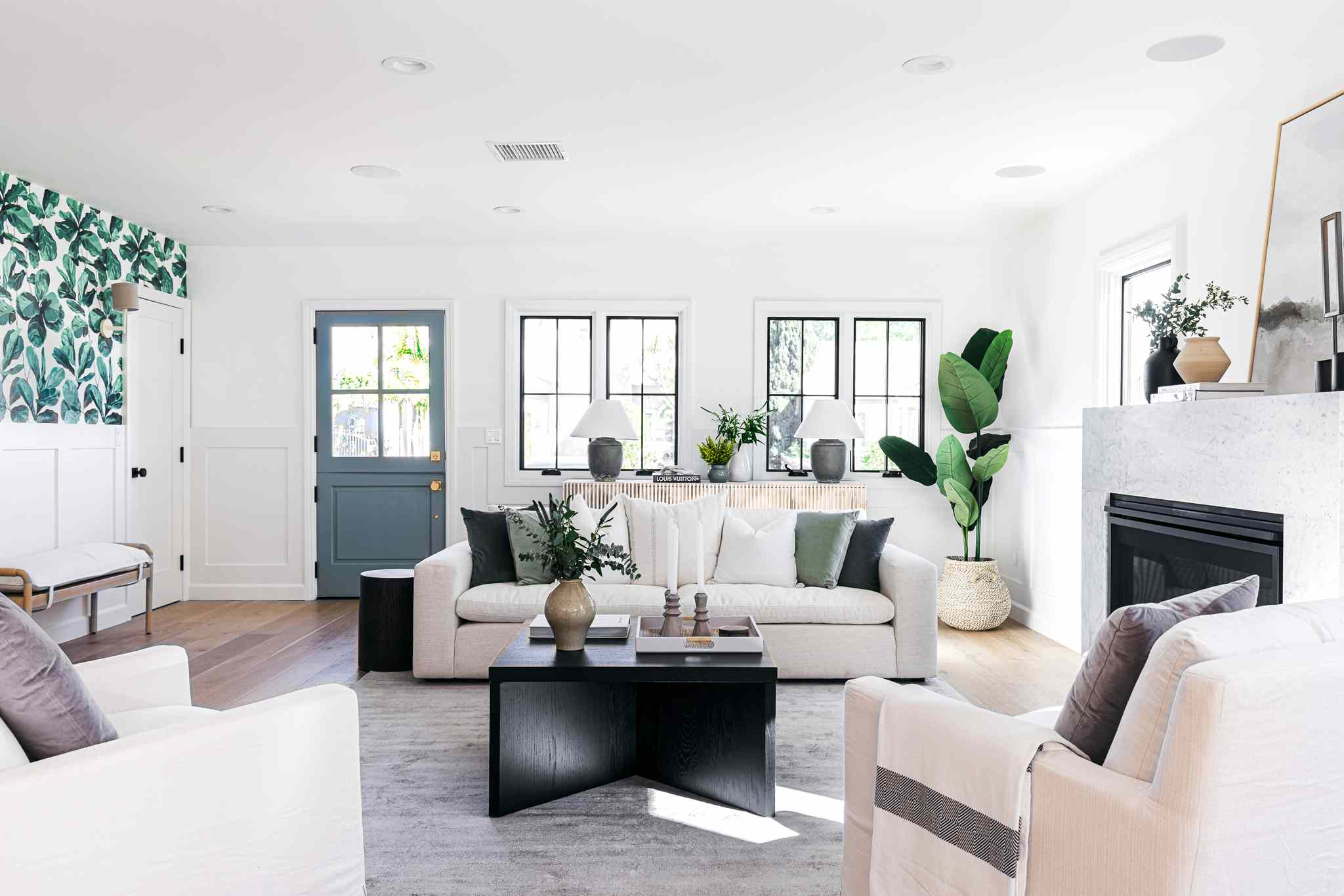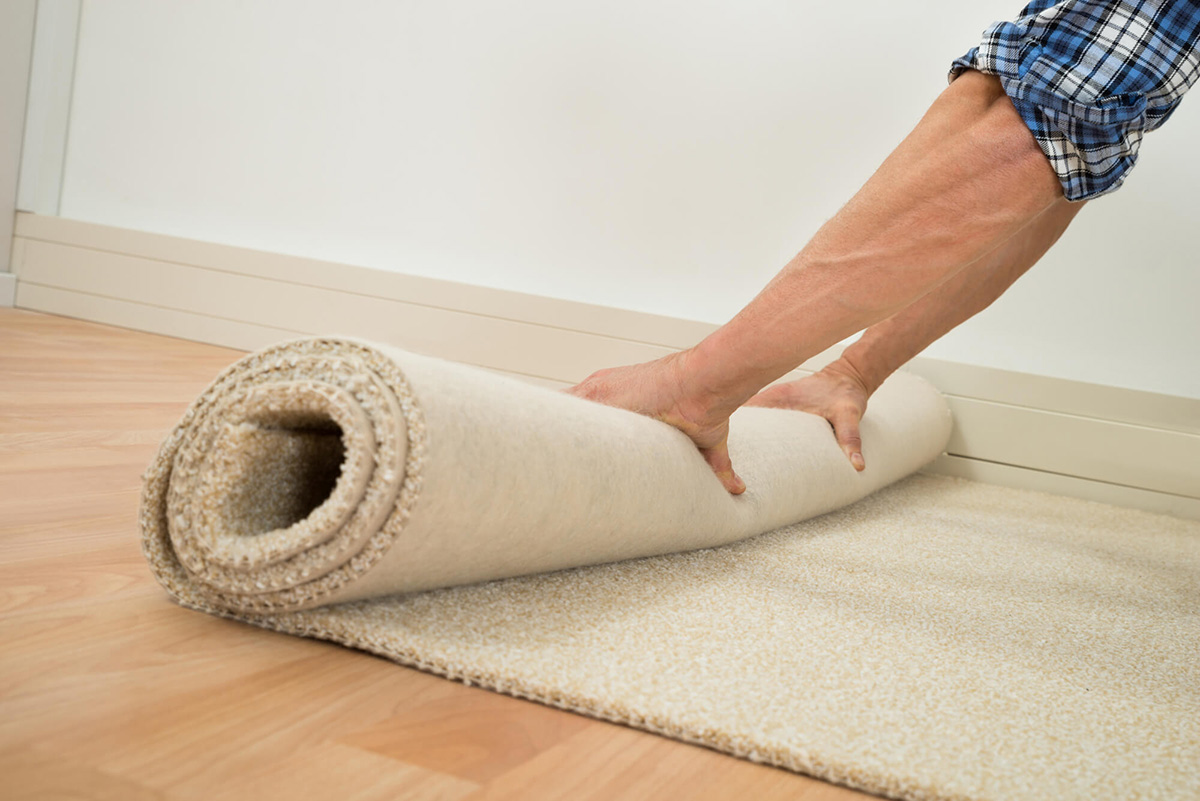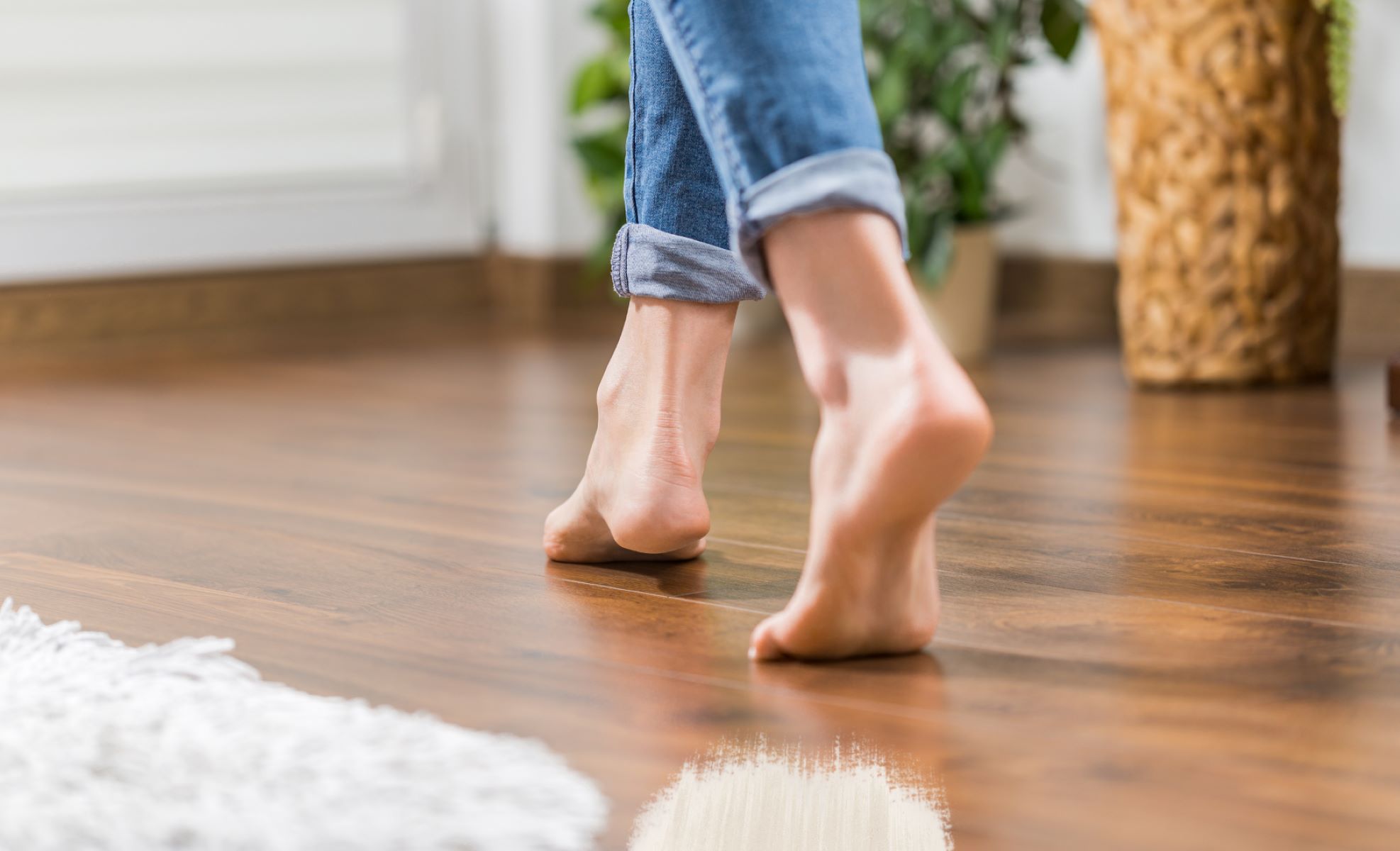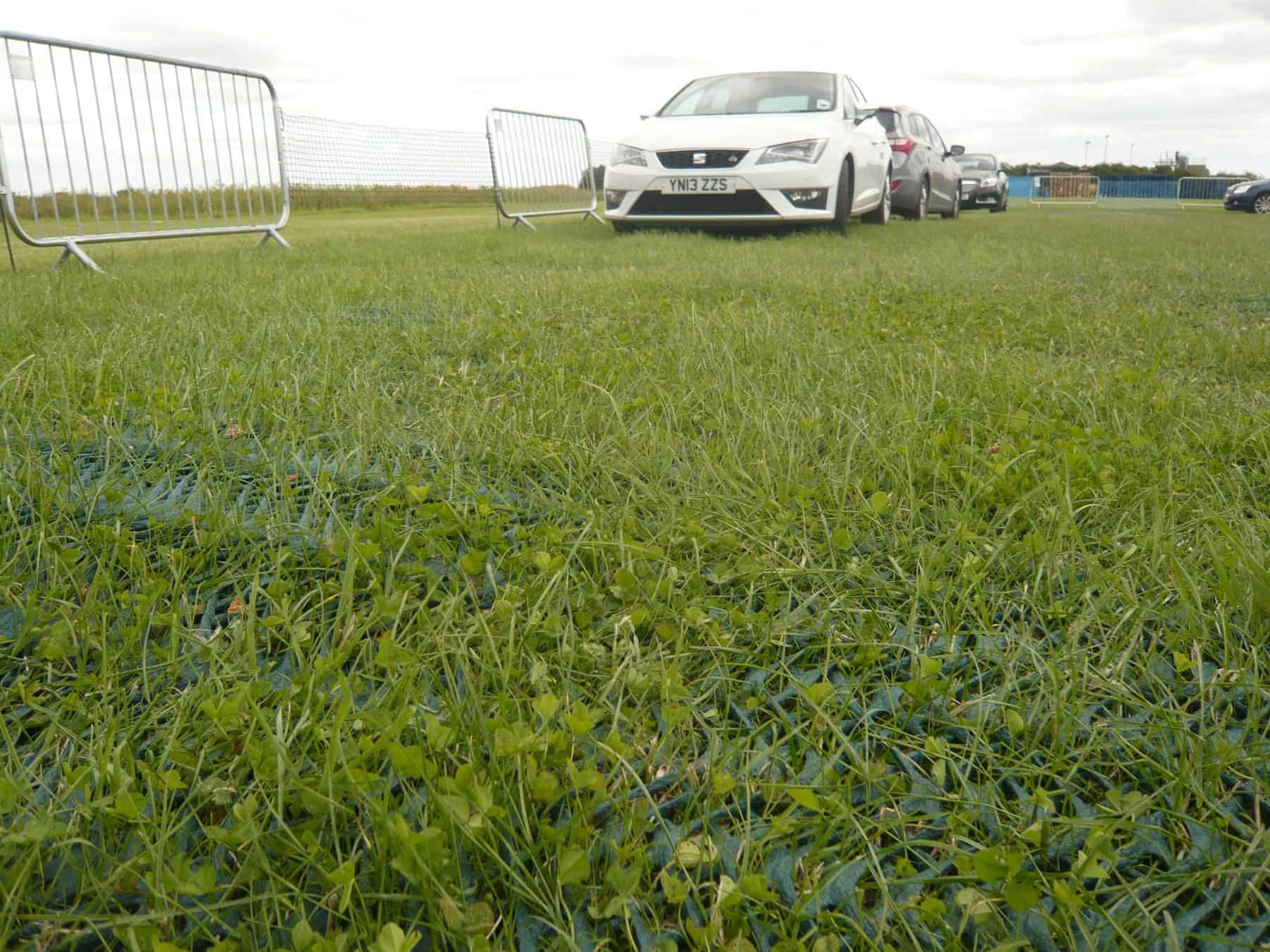Home>diy>Architecture & Design>How To Protect Your Design Intellectual Property When Working With Builders


Architecture & Design
How To Protect Your Design Intellectual Property When Working With Builders
Modified: March 6, 2024
Looking for a builder who will bring your architecture design to life? Discover how our professional team creates your dream house with precision and expertise.
(Many of the links in this article redirect to a specific reviewed product. Your purchase of these products through affiliate links helps to generate commission for Storables.com, at no extra cost. Learn more)
Introduction
When you pour your heart and creativity into designing a house, it’s only natural that you would want to see your vision become a reality. However, what happens if your design is used by a builder without your permission? This article explores the intricacies of working with a builder who uses your design to build a house, and the importance of design ownership in such situations.
Designing a house is a complex and multifaceted task that requires a deep understanding of architecture, aesthetics, functionality, and structural integrity. As an architect or designer, you invest countless hours researching, sketching, and refining your design to meet the unique needs and desires of your clients. You carefully consider every detail, from the placement of windows to the choice of materials, to create a space that harmonizes with its surroundings and reflects the personality of its inhabitants.
However, once your design is complete and handed over to a builder, there can often be a sense of uncertainty regarding its ownership and usage. You may wonder if the builder has the right to use your design without compensating you or seeking your permission. This is where the concept of design ownership comes into play.
Design ownership refers to the legal rights and responsibilities associated with the creation of a design. It encompasses various aspects, including copyright and intellectual property rights, which are crucial for maintaining control over your work and ensuring that it is used appropriately.
From a legal perspective, copyright grants the creator of an original work, such as a design or artistic piece, the exclusive rights to reproduce, distribute, and display that work. This means that you, as the architect or designer, have the right to control how and where your design is used. However, it’s important to understand that copyright protection is not automatic and may require registration or documentation to be legally enforceable.
Intellectual property rights, on the other hand, encompass a broader range of legal protections for creative works, including designs, inventions, and trademarks. These rights allow creators to prevent others from using, copying, or profiting from their work without permission.
It is crucial to ensure that your design is adequately protected before handing it over to a builder. This can be done by clearly outlining your ownership rights in a contractual agreement, such as an architect-client agreement or a design license. By clearly stating your expectations and asserting your rights, you can minimize the risk of unauthorized use or exploitation of your design.
Working with a builder who uses your design can be a complex process that requires effective communication and collaboration. Open and transparent dialogue from the outset is essential to establish a solid working relationship and mitigate any potential issues that may arise.
In the next sections of this article, we will explore effective strategies for working with a builder who uses your design, as well as how to resolve disputes and protect your rights throughout the process.
Key Takeaways:
- Protect your design ownership by clearly outlining your rights in contracts and agreements, and seek legal protection through copyright and intellectual property rights to prevent unauthorized use.
- Effective communication and collaboration with builders are crucial to ensure your design is implemented accurately, and seek legal advice to resolve disputes professionally and protect your design ownership rights.
Understanding the Role of a Builder
Before delving into the intricacies of working with a builder who uses your design, it’s important to have a clear understanding of the role builders play in the construction process. Builders are the individuals or companies responsible for bringing the design to life and ensuring that the construction meets the required standards of quality and safety.
Builders collaborate closely with architects and designers to interpret and implement the design plans. They are skilled professionals who possess the expertise and knowledge necessary to execute the construction process efficiently and effectively. Builders oversee various aspects of the project, including coordinating subcontractors, managing the construction timeline, and adhering to building codes and regulations.
While builders are skilled in their craft, it’s important to recognize that their role primarily focuses on the practical implementation and construction aspects of a project. They rely on the expertise of architects and designers to provide them with detailed design plans, specifications, and instructions to guide their work.
Builders are also responsible for procuring the necessary materials, equipment, and labor required for the project. They work closely with suppliers and subcontractors to ensure the timely delivery of materials and to coordinate the various trades involved in the construction process, such as carpenters, plumbers, and electricians.
Builders are accountable for the overall quality and integrity of the construction, ensuring that it aligns with the design vision and meets the requirements of the client. They are responsible for managing the construction budget, overseeing inspections and approvals, and addressing any issues or challenges that may arise during the construction process.
Communication and collaboration between architects/designers and builders are essential for a successful project. Dialogue should be open and frequent, with a clear exchange of information, ideas, and expectations. Regular site visits and meetings should be conducted to ensure that the construction progress aligns with the design intent and any necessary adjustments or modifications are communicated effectively.
Ultimately, the role of the builder is to bring the design to life and create a physical structure that reflects the vision and requirements set forth by the architect/designer and the client. Their expertise and craftsmanship are vital in transforming the design drawings into a functional and aesthetically pleasing space.
Understanding and appreciating the role of the builder is crucial when working with a builder who uses your design. By recognizing their expertise and working collaboratively, you can facilitate a smooth construction process and ensure that your design is implemented to its fullest potential.
The Importance of Design Ownership
Design ownership is a critical aspect of the architectural and design industry. It encompasses the legal rights and responsibilities associated with the creation and use of a design. Design ownership ensures that architects and designers have control over their work, allowing them to protect their ideas, maintain their professional reputation, and receive appropriate recognition and compensation.
One of the primary reasons why design ownership is important is to protect the originality and uniqueness of a design. Architects and designers invest significant time and effort in creating innovative and distinct designs that reflect their artistic vision and cater to the specific needs and preferences of their clients. Design ownership ensures that these creations are not replicated or used without the creator’s permission.
Design ownership also plays a crucial role in safeguarding the value and integrity of a design. Architects and designers rely on their reputation and portfolio of work to attract clients and secure new projects. If their designs are used without their consent or credit, it not only diminishes the value of their work but also erodes their professional standing. By asserting design ownership rights, architects and designers can maintain control over how their work is portrayed and ensure that it is associated with their name and brand.
Protecting design ownership also has financial implications. Architects and designers invest substantial time, resources, and expertise in creating a design. They should be able to reap the financial benefits of their work through appropriate compensation and licensing arrangements. Design ownership allows them to negotiate and enforce contracts that ensure they receive the compensation they deserve when their designs are used.
In addition to protecting the creator’s rights, design ownership also benefits clients and the broader architectural and design community. By upholding design ownership, clients can be confident that they are working with dedicated and talented professionals who prioritize quality and originality. It also encourages healthy competition and innovation within the industry, as architects and designers are motivated to continually push boundaries and create exceptional designs without fear of unauthorized use.
Furthermore, design ownership promotes and encourages the growth of intellectual property rights in the architectural and design field. It establishes a framework for legal protection, enforcement, and recognition of creative works. This serves as a powerful incentive for architects and designers to invest in their craft, knowing that their rights will be upheld and their work will be respected.
In summary, design ownership is of utmost importance in the architectural and design industry. It safeguards the integrity and value of a design, protects the rights of architects and designers, ensures appropriate compensation, and fosters a culture of innovation and creativity. By prioritizing design ownership, architects, designers, clients, and the industry as a whole benefit from a thriving and sustainable creative ecosystem.
Legal Perspective: Copyright and Intellectual Property Rights
When it comes to protecting design ownership, two key legal concepts come into play: copyright and intellectual property rights. These legal frameworks provide architects and designers with the necessary tools to secure their creative works, prevent unauthorized use, and assert their ownership rights.
Copyright is a form of legal protection granted to the creators of original works, including architectural designs. It provides exclusive rights to control the reproduction, distribution, display, and modification of the copyrighted work. In the case of architectural designs, copyright protects the drawings, plans, and specifications created by the architect or designer.
It’s important to note that copyright protection arises automatically upon the creation of the work without the need for registration, although registering your copyright can provide additional benefits in terms of legal enforcement and easier proof of ownership. Copyright protection typically lasts for the life of the creator plus a certain number of years, allowing them to control the use and licensing of their work during that time.
Intellectual property rights encompass a broader range of legal protections for creative works, including architectural designs. These rights provide a more comprehensive framework to safeguard the rights of creators and prevent unauthorized use, copying, or profiting from their work.
In addition to copyright, other forms of intellectual property protection that may apply to architectural designs include design patents and trademarks. A design patent grants the creator exclusive rights over the aesthetic aspects of a design, protecting its unique appearance and ornamental features. Trademarks, on the other hand, protect the brand identity associated with a design or architectural firm, such as logos, names, or slogans.
While copyright and intellectual property rights provide valuable legal protections, it’s important to understand that they may have limitations and exceptions. For example, the fair use doctrine allows for the limited use of copyrighted works for purposes such as criticism, commentary, or education. However, determining what constitutes fair use can be a complex and subjective matter, and it’s always advisable to seek legal advice to ensure compliance with copyright laws.
Registering your copyright or obtaining other forms of intellectual property protection can enhance your rights and provide stronger legal recourse in case of infringement. It can make it easier to establish ownership, prevent unauthorized use, and pursue legal action against those who infringe on your design ownership rights.
Understanding and leveraging copyright and intellectual property rights are crucial for architects and designers who want to protect their design ownership. By familiarizing themselves with the legal framework, registering their copyrights, and taking appropriate measures to assert their ownership rights, architects and designers can safeguard their creative works and maintain control over their designs.
Ensuring Design Protection
Ensuring the protection of your design is crucial in maintaining control over your creative work and asserting your ownership rights. While copyright and intellectual property rights serve as legal frameworks for protection, there are additional steps you can take to safeguard your design and mitigate the risk of unauthorized use or exploitation.
One of the most important steps in ensuring design protection is to clearly establish ownership rights from the outset. This can be done through written agreements, such as architect-client agreements or design licenses, which outline the terms and conditions of the design ownership. These agreements should clearly state that the architect or designer retains ownership of the design and that any use of the design requires their consent.
Additionally, it’s crucial to maintain thorough documentation of the design process and any iterations or modifications made along the way. This documentation can serve as evidence of your creative process and help establish your ownership and originality of the design in case of any disputes or infringement claims.
In some cases, architects and designers may choose to register their design with relevant intellectual property authorities. This can provide additional legal protection and make it easier to enforce their design ownership rights. Registration may vary depending on the jurisdiction, so it’s important to consult with legal experts familiar with intellectual property laws in your specific region.
When working with builders or other parties involved in the construction process, it’s important to clearly communicate your design ownership rights. This includes providing copies of the architect-client agreement or design license and informing them of the restrictions and permissions associated with your design. By setting clear expectations from the beginning, you can minimize the risk of unauthorized use and ensure that your design is used in accordance with your wishes.
Regular communication and collaboration with the builder or construction team is also crucial in protecting your design. By maintaining an open and transparent dialogue, you can address any concerns or issues as they arise and ensure that the design is being implemented correctly. Site visits and progress meetings provide opportunities to assess the construction progress, review any modifications, and ensure that your design intent is being upheld.
In the event of a dispute or infringement, it’s important to seek legal advice and explore the available options for resolution. This may involve sending cease and desist letters, pursuing legal action to enforce your design ownership rights, or entering into negotiations for proper compensation or licensing.
Overall, ensuring design protection requires a proactive approach, clear documentation, effective communication, and legal awareness. By taking these steps, architects and designers can preserve their creative rights, maintain control over their work, and protect the value and integrity of their designs.
Before hiring a builder, make sure to clearly communicate your design expectations and specifications. It’s important to have a written agreement that outlines how your design will be used and any potential copyright issues.
Working with a Builder Who Uses Your Design
When you discover that a builder is using your design without your permission, it can be a disheartening and frustrating experience. However, it’s essential to approach the situation with professionalism and open communication to achieve the best possible outcome. Here are some strategies for working with a builder who uses your design.
1. Verify the Use of Your Design: Before taking any action, it’s crucial to confirm that the builder is indeed using your design without authorization. Collect as much evidence as possible, such as photographs, plans, and any other documentation that proves your ownership of the design.
2. Open Dialogue: Reach out to the builder and initiate a conversation about the unauthorized use of your design. Stay calm and professional while expressing your concerns. Clearly communicate your ownership rights and explain that the use of your design without permission is a violation of those rights.
3. Seek Legal Advice: Consult with a lawyer who specializes in intellectual property rights and design ownership. They can guide you through the legal options available to protect your design and pursue appropriate action against the builder. They can also help you understand your rights and the strength of your case.
4. Attempt to Resolve Amicably: In some cases, an amicable resolution can be reached through negotiation and compromise. Discuss the possibility of a licensing agreement with the builder, where they pay a fee or royalty for the use of your design. This can be a mutually beneficial solution that allows the builder to continue using your design while providing you with compensation.
5. Revise or Redesign: If the builder is unwilling to negotiate or you prefer not to allow the use of your design, consider revising or redesigning your plans. Make necessary modifications to your design to create a distinct version that is not the same as the one being used by the builder. By doing so, you can maintain your design ownership and prevent further confusion or unauthorized use.
6. Protect Your Future Designs: Enhance the protection of your future designs by clearly establishing design ownership in contracts and agreements. Include provisions that clearly state your ownership rights and specify that any unauthorized use will result in legal action. This will strengthen your position and deter others from infringing on your future design work.
7. Document Everything: Keep detailed records of all communication and any actions taken throughout the process. This documentation can be crucial in any legal proceedings or negotiations to support your claims and ensure that your rights are upheld.
Remember, working with a builder who uses your design without permission can be a complex and emotionally charged situation. It’s important to approach the situation with professionalism, seek legal guidance, and strive for a resolution that protects your design ownership rights while considering all possible options for resolution.
Effective Communication and Collaboration
When working with a builder who uses your design, effective communication and collaboration are key to ensuring a successful outcome and maintaining a positive working relationship. Here are some strategies to foster effective communication and collaboration throughout the process.
1. Open and Transparent Dialogue: Establish open lines of communication from the start of the project. Clearly convey your expectations, concerns, and design intent to the builder. Encourage the builder to share their insights, ask questions, and provide regular updates on the progress of the construction.
2. Regular Meetings and Site Visits: Schedule regular meetings and site visits to assess the construction progress and address any design-related issues. These interactions provide opportunities to clarify any misunderstandings, review modifications, and ensure that the design is being implemented accurately.
3. Clear and Detailed Design Documentation: Provide the builder with clear and detailed design documentation, including plans, specifications, and any additional notes or instructions. Clearly indicate any specific design elements or features that require special attention or clarification.
4. Design Clarification and Interpretation: Foster a collaborative approach by being open to the builder’s insights and ideas. Encourage them to communicate any challenges or concerns they may have with the design, and work together to find practical solutions that maintain the design intent while addressing construction realities.
5. Promptly Address Design Changes: Inevitably, changes may arise during the construction process. It is essential to promptly address any necessary design modifications or revisions. Clearly communicate the changes to the builder and provide updated design documentation to ensure that everyone is on the same page.
6. Clarify Roles and Responsibilities: Clearly define the roles and responsibilities of each party involved. Establish who has authority for design decisions and approvals to avoid confusion and ensure that the construction aligns with the design intent.
7. Document Agreements and Changes: Keep a record of all agreements, changes, and decisions made throughout the project. Maintain documentation of any agreed-upon modifications or deviations from the original design to avoid future misunderstandings or disputes.
8. Foster a Collaborative Mindset: Encourage collaboration and open-mindedness from all parties involved. Value the input and expertise of the builder while maintaining the integrity and creative vision of your design. Foster a sense of teamwork and shared responsibility to achieve the best possible outcome.
9. Flexibility and Adaptability: Understand that the construction process may require some adjustments or compromises. Be flexible and willing to make necessary modifications to the design if it enhances the functionality or feasibility of the construction, while still maintaining the original design intent as much as possible.
10. Professionalism and Respect: Maintain a professional and respectful approach in all interactions, even when faced with challenges or disagreements. Address any conflicts or concerns promptly and constructively, seeking resolution through open communication and negotiation.
By fostering effective communication and collaboration with the builder, you can create a harmonious working relationship that leads to a successful implementation of your design. Clear and open dialogue, regular meetings, and a collaborative mindset will help ensure that your design vision is translated into reality while considering the practicalities of the construction process.
Resolving Disputes and Protecting Your Rights
While it’s always ideal to have a smooth working relationship with a builder who uses your design, disputes may arise that require resolution. It’s important to protect your rights and navigate these situations in a professional and effective manner. Here are some strategies for resolving disputes and protecting your design ownership rights:
1. Seek Legal Advice: If you find yourself in a dispute with a builder, it’s crucial to seek legal advice from professionals with expertise in intellectual property and construction laws. They can guide you on the best course of action based on the specifics of your situation.
2. Review Contracts and Agreements: Carefully review the agreements and contracts that were established at the beginning of the project. Identify any clauses related to design ownership, infringement, or dispute resolution. Understanding the terms outlined in these agreements will help you determine your rights and options moving forward.
3. Gather Documentation and Evidence: Collect and maintain thorough documentation related to the dispute. This may include email exchanges, site visit reports, photographs, design plans, and any other relevant evidence. These documents can serve as crucial evidence should the dispute escalate to a legal proceeding.
4. Engage in Mediation or Negotiation: Consider engaging in mediation or negotiation as a means of resolving the dispute outside of the courts. Mediation involves a neutral third party who facilitates communication and helps the parties reach a mutually acceptable resolution. Negotiation involves direct discussions between you and the builder to find a compromise or satisfactory solution.
5. File a Lawsuit, if Necessary: In cases where mediation or negotiation fails to resolve the dispute, filing a lawsuit may be necessary to protect your design ownership rights. Consult with your legal advisor to assess the strength of your case and determine whether pursuing legal action is in your best interest.
6. Protect Your Future Designs: Take steps to protect your future designs by clearly establishing design ownership in contracts and agreements. Define your rights, specify the penalties for unauthorized use, and outline the steps you will take to enforce your ownership. This will help prevent future disputes and deter potential infringers.
7. Enforce Copyright and Intellectual Property Rights: If the builder continues to use your design without your consent, you may need to assert your copyright and intellectual property rights. This may involve sending cease and desist letters, pursuing legal action, or seeking injunctions to prevent further unauthorized use.
8. Document All Actions Taken: Keep a detailed record of all actions taken, including communication, negotiations, and legal proceedings. Maintain a chronological order of events, noting dates, times, and individuals involved. This documentation provides a valuable resource in the event of any future disputes or legal proceedings.
Remember, resolving disputes and protecting your rights requires a strategic and well-documented approach. It’s important to work closely with legal professionals to ensure that your design ownership rights are upheld and that you take the necessary steps to navigate any disputes in a fair and effective manner.
Conclusion
Design ownership is a critical aspect of the architectural and design industry, ensuring that architects and designers retain control over their creative works. Working with a builder who uses your design without permission can be a challenging situation, but by understanding your rights, effectively communicating, and taking appropriate action, you can protect your design ownership and assert your rights.
From establishing clear ownership rights in agreements to documenting the design process, ensuring design protection is essential. Copyright and intellectual property rights offer legal frameworks, but additional steps, such as registration and collaborations with legal professionals, can enhance protection further.
When working with a builder who uses your design, effective communication and collaboration become crucial. Open dialogue, regular meetings, and clear documentation help ensure that the builder understands your design intent and implements it accurately. Flexibility and a collaborative mindset allow for productive problem-solving and decision-making throughout the process.
In case of disputes, seeking legal advice, reviewing contracts, and gathering evidence are crucial steps. Engaging in mediation or negotiation may lead to a satisfactory resolution, but if necessary, filing a lawsuit becomes an option to protect your design ownership. Regardless of the path taken, protecting your future designs and enforcing copyright and intellectual property rights remain important facets.
In conclusion, design ownership is fundamental to architects and designers, allowing them to protect their work, maintain their reputation, and receive appropriate recognition and compensation. When faced with a builder who uses your design, you have the power to assert your ownership rights by leveraging legal frameworks, effective communication, collaboration, and the appropriate steps to resolve disputes. By doing so, you can uphold the integrity of your creative work and maintain control over your designs, ensuring a thriving and sustainable creative ecosystem in the architectural and design industry.
Frequently Asked Questions about How To Protect Your Design Intellectual Property When Working With Builders
Was this page helpful?
At Storables.com, we guarantee accurate and reliable information. Our content, validated by Expert Board Contributors, is crafted following stringent Editorial Policies. We're committed to providing you with well-researched, expert-backed insights for all your informational needs.


